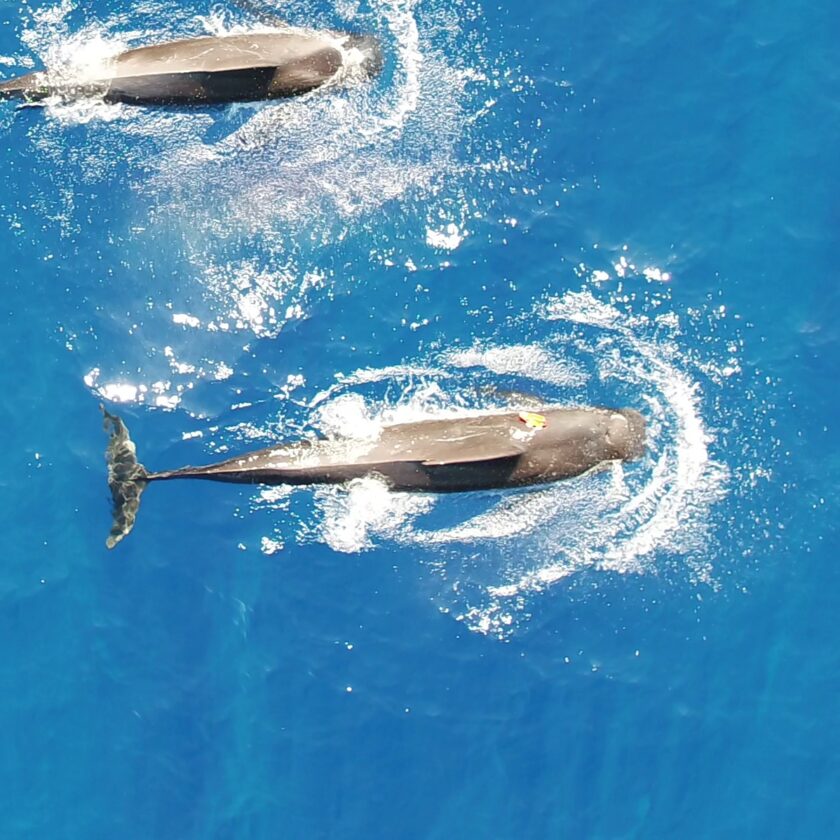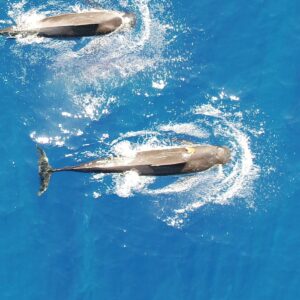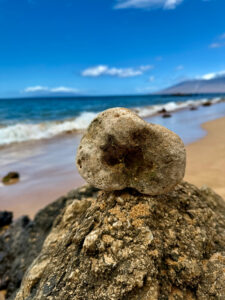Study: Hawaiian pilot whales need more than 140 squid daily

An aerial view shows Hawaii short-finned pilot whales at the surface. Photo courtesy HIMB MMRP
An adult pilot whale needs about 142 squid a day to meet its energy requirements, according to a new University of Hawaii study.
Hawaii’s population of pilot whales is unique because they do not migrate but remain in the same region with the same close-knit families, while diving to extreme depths to feed on squid, their primary food source.
Researchers at the University of Hawaii Institute of Marine Biology say they have calculated the first detailed “energetic budget” for Hawaii’s short-finned pilot whales. They found that the daily intake for one whale — about 142 squid — means Hawaii’s population of roughly 8,000 pilot whales requires an estimated 416 million squid a year.
Published in the Journal of Experimental Biology, the findings provide a new benchmark for protecting the historically understudied species, the research team said.
“Pilot whales are one of the only oceanic dolphins that regularly dive to extreme depths — up to 1,000 meters — to find prey,” said William Gough, Marine Mammal Research Program postdoctoral researcher and lead author of the study, in a statement. “This deep-diving, high-risk foraging strategy requires a delicate balance between the energy they spend and the energy they acquire. Our study is the first step in quantifying that balance for this specific population.”
Understanding the whales’ energy needs is key to ensuring their survival, the scientists said.
“This detailed scientific data gives Hawaii management agencies a critical tool to monitor how changes in the ocean — from warming waters to ship noise — might push the pilot whales past their survival limit,” said Lars Bejder, MMRP director and co-author of the study.
Gough said deep-diving species like pilot whales can be especially vulnerable to human-caused disturbances. However, Hawaii’s population also may benefit from having an abundant and stable deep-ocean food source, which could help them better cope with environmental change than populations elsewhere.
To gather data, the researchers placed tracking tags on eight short-finned pilot whales off Lanai between 2021 and 2024.
The tags recorded movement, depth and sound and used 2K cameras with LED headlights to observe the whales during their deep-diving hunts. Scientists combined the tags’ data with body measurements from aerial drone images to estimate energy use.
“Getting to be on the water and close to these animals is an absolute joy,” Gough said. “But the fact that we can see into their world, even at 800 meters and under extreme pressures (80 times that at the surface), and observe them capturing their food in complete darkness, feels unbelievable to me. It’s truly a privilege to document the lives of these elusive, deep-diving whales.”
Pilot whales are listed as “data-deficient” by the International Union for Conservation of Nature, meaning there is not enough information to accurately assess their extinction risk despite relatively large population sizes.
MMRP plans to apply these methods to estimate energetic needs for other cetacean species — from harbor porpoises to blue whales — with the goal of establishing a global benchmark for marine mammal conservation.






